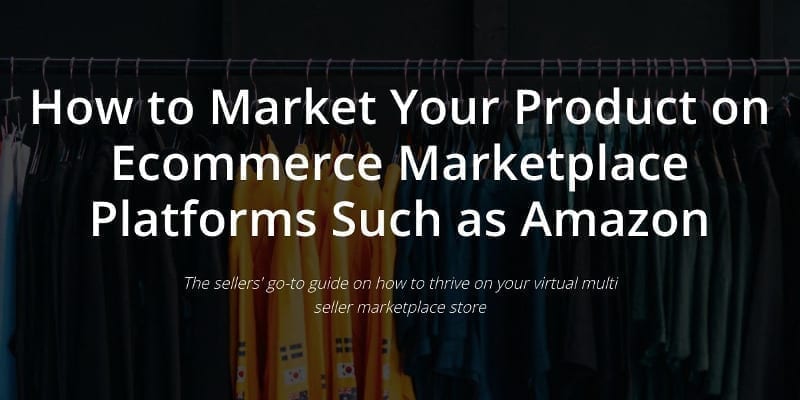How to Market Your Product on Ecommerce Marketplace Platforms Such as Amazon
Millions of buyers are crowding on online multi seller malls, with more than half of online shoppers preferring virtual multi-store shopping malls over standalone e-commerce stores.
Sellers are actively joining as well (eleven millions of new listings is being added on eBay each week), while an online customer’s journey became a complex labyrinth of touchpoints.
Whether you are a beginner or an established seller, in such a competitive environment, simply listing your products isn’t enough. A well-thought approach is a must to market your products successfully.
The Amazon sellers’ are setting the following strategies to increase revenue:
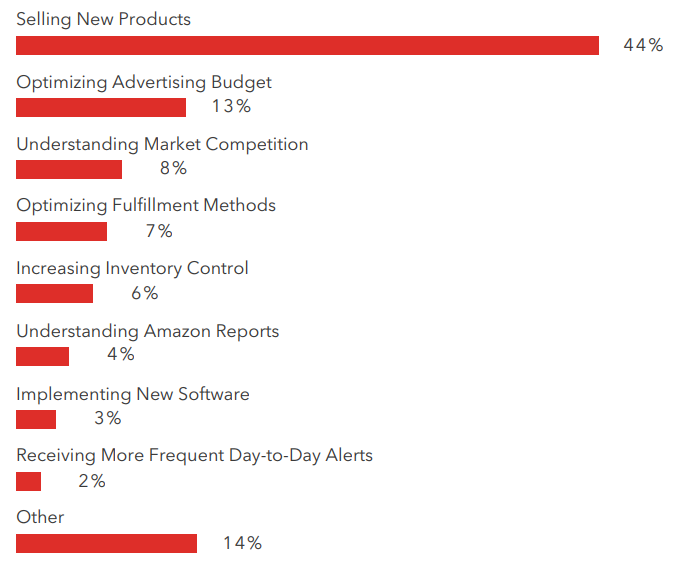
Thus, knowing your shoppers and competitors, having flawless listings, and using efficient marketing tools is crucial to selling on ecommerce multi vendor marketplace platforms successfully.
You may also be interested:
1. Know Your Buyers and Match Their Expectations
Understand the ecommerce multi vendor mall you are selling on shoppers’ needs and buying patterns in detail. What do they want to buy, how do they search for a product, evaluate items and make a purchasing decision.
1.1 Research customer needs and behavior
Let customers ask all the questions they have through reviews or a special Q&A tool.
The Yumbles Q&A tool for the marketplace sellers to communicate with buyers:
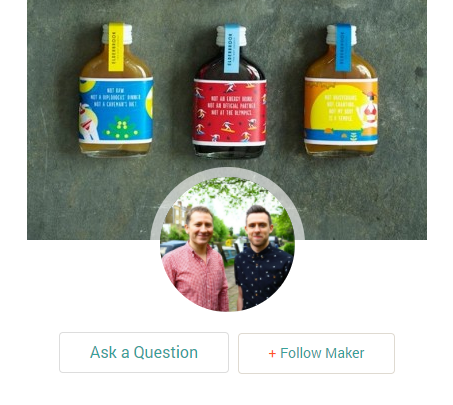
This will help you to understand their purchasing priorities. Besides, leverage customer data insights (sales reports and analytics) provided by a virtual multi seller marketplace store, to define the weak and strong points of your sales funnel.
Product reviews and feedback is another way to build a detailed picture about your shoppers.
1.2 Match your actions to your shoppers’ segment
Build your listings and all the promotional actions on the basis of your knowledge about customers.
For example, set a calendar of promotions by picking events that make sense for your buyer’s segment: seasonal, sporting events or back-to-school.
The Yumbles seasonal promotion of one of its sellers with the summer-related wording:
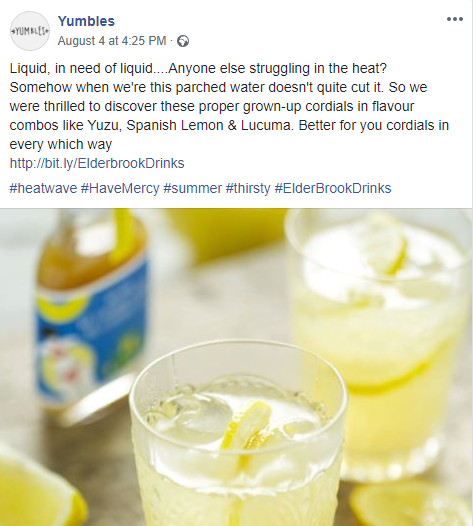
Add discounts and other activities that fit your customers’ purchasing habits.
1.3 Build a strong two-way communication
Reviews
Michael Russell, the owner of the Amazon Best Seller company, says that the most important thing for sales is to have good reviews: 85% of online buyers trust reviews as much as personal recommendations.
Flawless Messaging
Promptly replying to questions, inquiries, and complaints is critical: according to the Amazon eCommerce multi vendor platform, orders with messages that are responded to within one day receive 50% less negative feedback compared to when sellers responded after that time period.
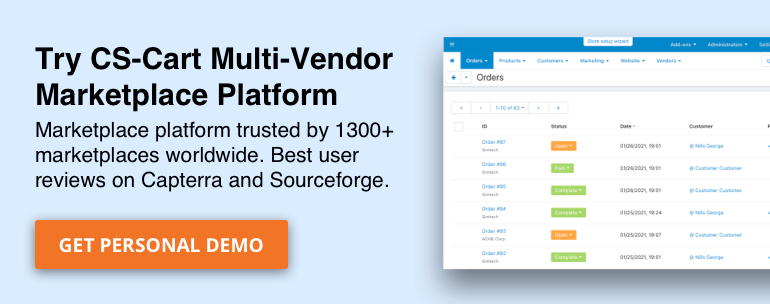
True Experience #1

Antonella Pisani
is an eCommerce consultant who also owns a small business called FACT goods (Find a Cure Today) that sells direct and on Amazon. Prior to pursuing an entrepreneurial path, she was VP eCommerce at Fossil, and held leadership roles at ProFlowers, JCPenney and Guitar Center.
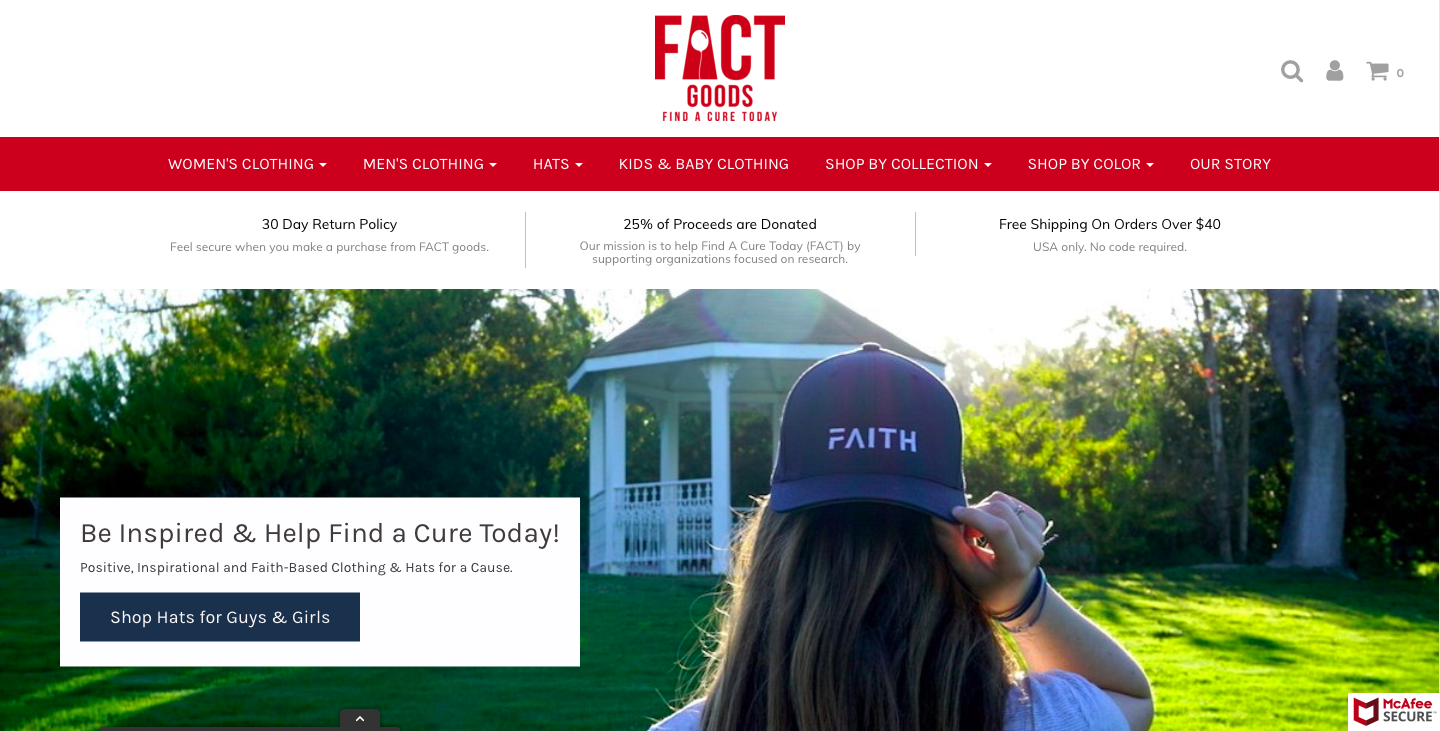
Selling on Amazon can be difficult at first since there is so much competition. If you have existing products that you want to sell, perform research using tools like Scope and Marketwords to understand what is selling that is similar to your products and the most popular keywords shoppers are using.
Consider starting out at a lower price to gain some momentum and remember to ask for reviews from customers. You can also consider using sponsored listings to boost exposure for your products as you get started, and if you own the brand trademark you can get set up on the brand registry to become eligible for other ad types. Sponsored listing management tools like Ignite can help you optimize your campaigns and find great long-tail keywords that may provide a higher ROI.
Once you have a solid base of reviews in place, you can test increasing the prices to see what happens to sales velocity and margin dollars. Just don’t grow complacent—keep an eye on new competitors and pricing changes!
True Experience #2

Jeff Moriarty, the owner of DogChristmasStockings eCommerce store
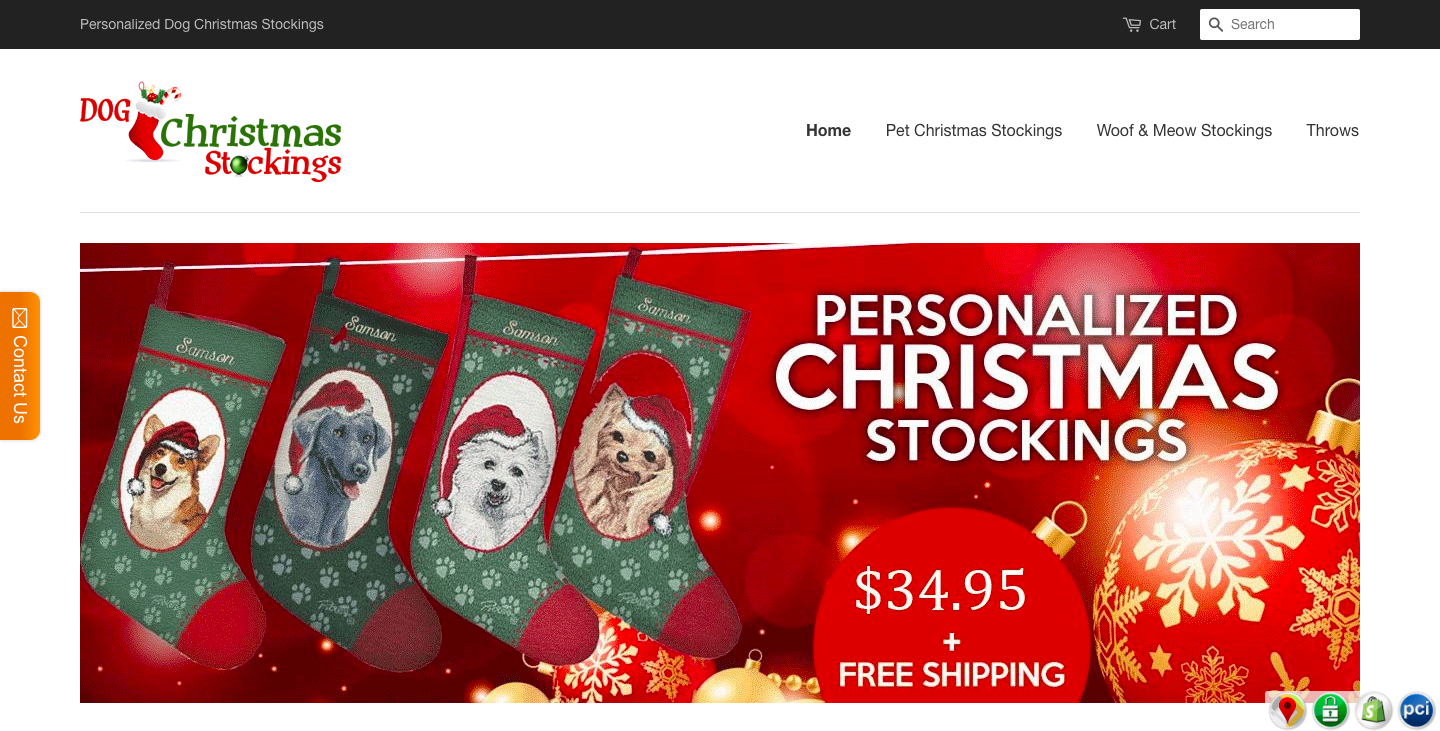
Our company does a lot year-round on Amazon Marketplace, but mainly around Christmas time. We have been on Amazon Marketplace for about 3 years now. The first holiday season we listed our products, sales were very low due to the competition, and the non-existent reviews we had for our products.
So the following year we advertised all of our products through Amazon’s sponsored ads program. Throughout the entire year, we were able to build up a lot more reviews for our products due to the increased sales, and when that second holiday season came, we went from 50 sales the previous year to over 600 that year. More than 1/2 of that from our organic Amazon listings.
Because we are continuing to do this, I expect to double those sales this holiday season. To all other retailers starting on the Amazon marketplace, advertise to build up reviews and authority. This will help you build your organic positioning, and that’s when the sales really start to come in.
2. Provide Flawless Product Listings
According to the Shotfarmreport, product content is important for 95% of online buyers:
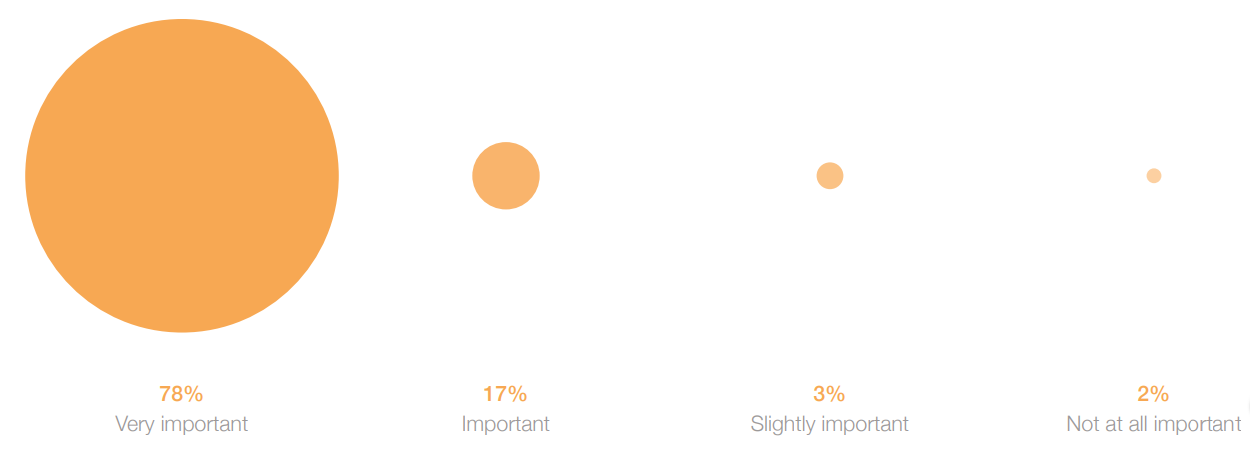
As per the report, product descriptions and images are the most critical elements of listings.
2.1 Copy
Title
A product title is often used by a virtual marketplace search engine when matching a customer’s search terms to items. To create the right wording, think like a shopper:
- What terms are they using to find your products?
- What are they looking for in a product like yours?
Use relevant and accurate titles that follow key product points: features, color, size.
The Yumbles listing example ‘Healthy Snacks Gift Collection”‘:
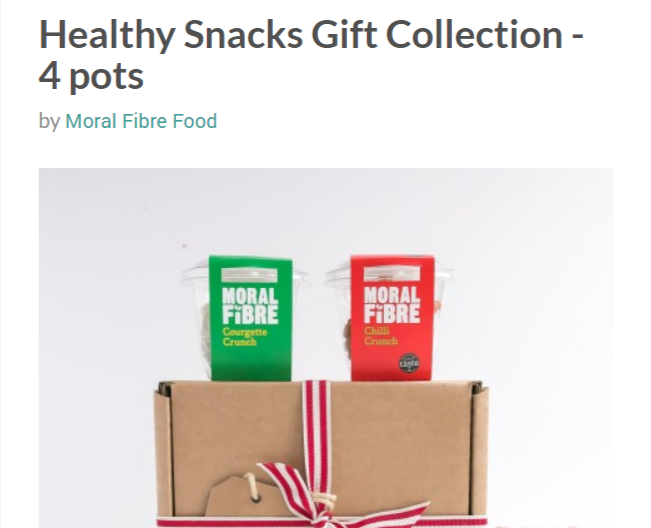
With just four words, this product will show up in search results for ‘Healthy‘, ‘Healthy Snacks‘, ‘Healthy gift‘, ‘Gift Collection‘, ‘Snacks Collection‘, and ‘Gift‘.
Product Description
Showcase different product uses and how it improves your potential customers’ life.
Answer shoppers questions in your description copy: dimensions of furniture, proper storage of edible products.
The Clever Little Monkey product description is clear and fits their audience (parents who buy furniture for their kids) typical concerns:
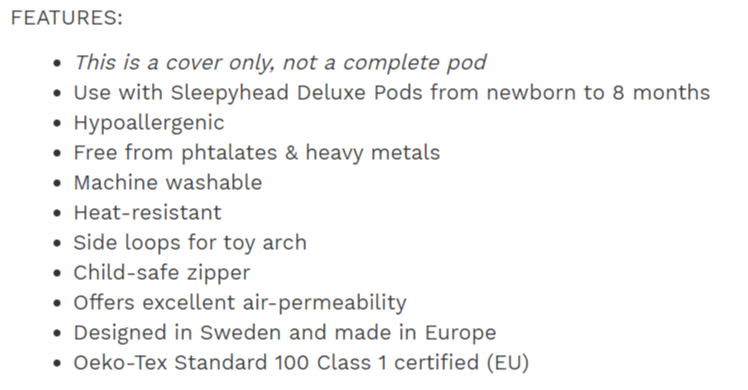
Make text skimmable and clear, with the most compelling information at the beginning of the description. Use compelling subheads and bullet points to highlight important product features.
Visuals
Product photos are the first thing that catches the attention of shoppers if created properly.
According to a research conducted by Nielsen Norman Group, an online user experience research company, some types of pictures are ignored, while other types are treated as important content and scrutinized.
The photo types that are treated as important are:
- big pictures—when customers request an enlargement;
- product important details and information-carrying images.
The research picture demonstrates the results of the eye-tracking survey (with blue color matching the motion of eyes):
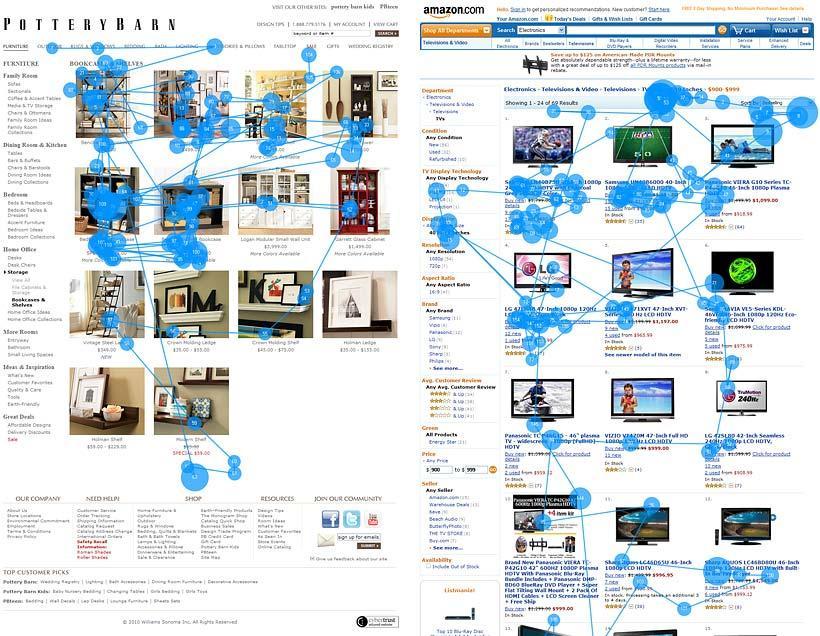
On the right picture, the TV photos are almost ignored. They aren’t useful in making purchasing decision because the broadcasting TV screens aren’t demonstrating relevant purchasing info.
The product visuals on the left are holding relevant information, and are getting much more attention.
Diversify your photos
If all your photos have the same angle or look, buyers can’t make an informed decision. Use lifestyle photos—those that help customers imagine themselves using products.
SEO-optimization
The key principle of successful SEO optimization of content is relevancy. The more relevant your content is to the typical search queries of your customers (including the common language they use), the better your chances of appearing higher in search results.
To define the right keywords, you can use Google Keyword Planner, or your marketplace customer insights.
The ChannelAdvisor SEO eBook advices:
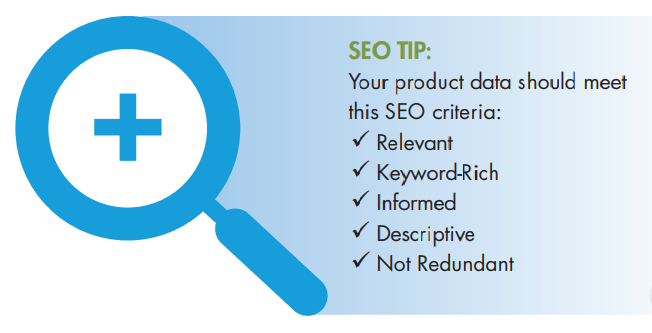

2.2 The keys to successful listings
Correct information
The Shortfarm study found that 87% of online consumers would never buy again from virtual multi-store shopping mall suppliers that provide incorrect information of products, and 42% of the US consumers have returned products due to discrepancies in product descriptions.
Highlight core value points
It’s necessary to help users quickly understand your product’s value that is relevant to them.
On the Yumbles sellers’ product page, the value of the product is highlighted in a great manner:
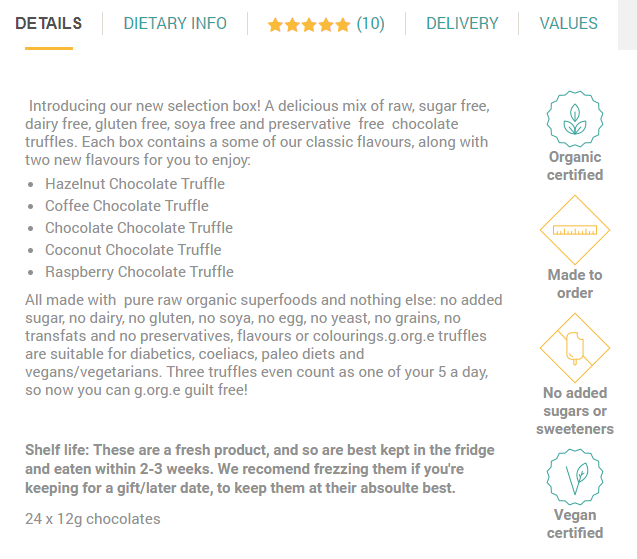
Create product guides
An overview of your product’s key features and why they are beneficial to your eCommerce multi vendor mall shoppers, helps potential customers identify which purchase is right for them. Product guides also educate them.
Help with comparison
Comparing multiple offerings is one of the most crucial user tasks. Shoppers don’t know which of the multiple products is best for them without having to compare the options.
Improve listings constantly
If a potential buyer checks out your product page a few times but doesn’t buy, find the weak points in your listings: write out all the potential objections and friction points your prospects might have, and fix them.
True Experience #3

Jasper Yap, Chief Technology Officer for Eezee.sg, a B2B industrial supplier marketplace from Singapore
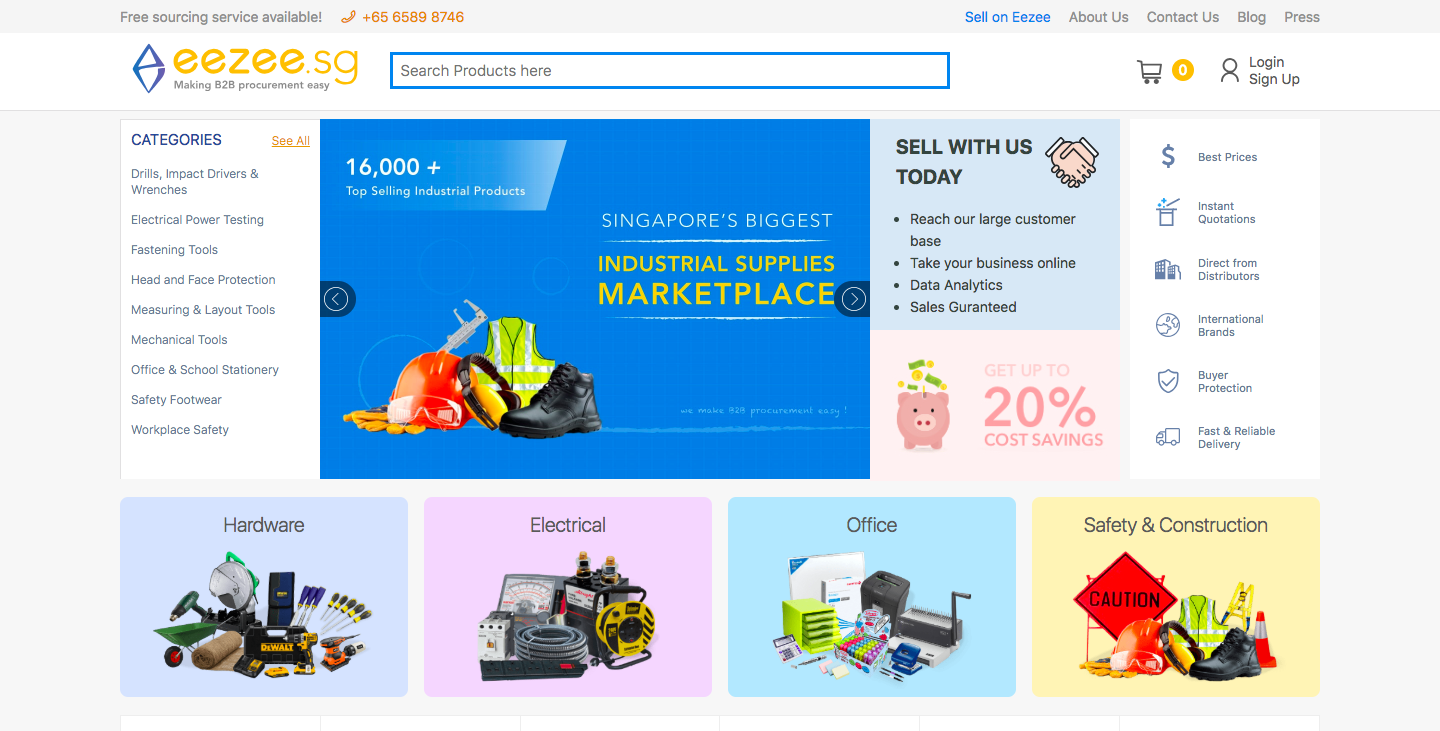
Together with partners, we run Eezee a Marketplace for businesses to buy and sell in bulk. Our main categories are, industrial hardware, office supplies, electrical components and safety equipment.
What we have seen work well are:
- Upload clear images with transparent background.
- Upload images of product taken from multiple angles.
- Find products that are under-represented in the market!
- Write compelling product description! Addressing the whys, what then how. If possible, try to hit the 500-word mark to rank higher on Google.
- Free delivery! We have seen great success with sellers who offer free delivery above at minimum order value (MOV). What we’ve seen is that buyers typically would order at the MOV to hit the free delivery amount.
- Push for customer reviews! This will help the algorithms know that you have a great selling/popular product!
- Share the news on social media! Google is now picking up social signals and taking it into consideration when they rank links.

True Experience #4

Kent Lewis, President and Founder of Anvil Media, Inc. He is responsible for ensuring the company is living its mission and vision by managing overall corporate strategy, including operations, business development, sales, and marketing.
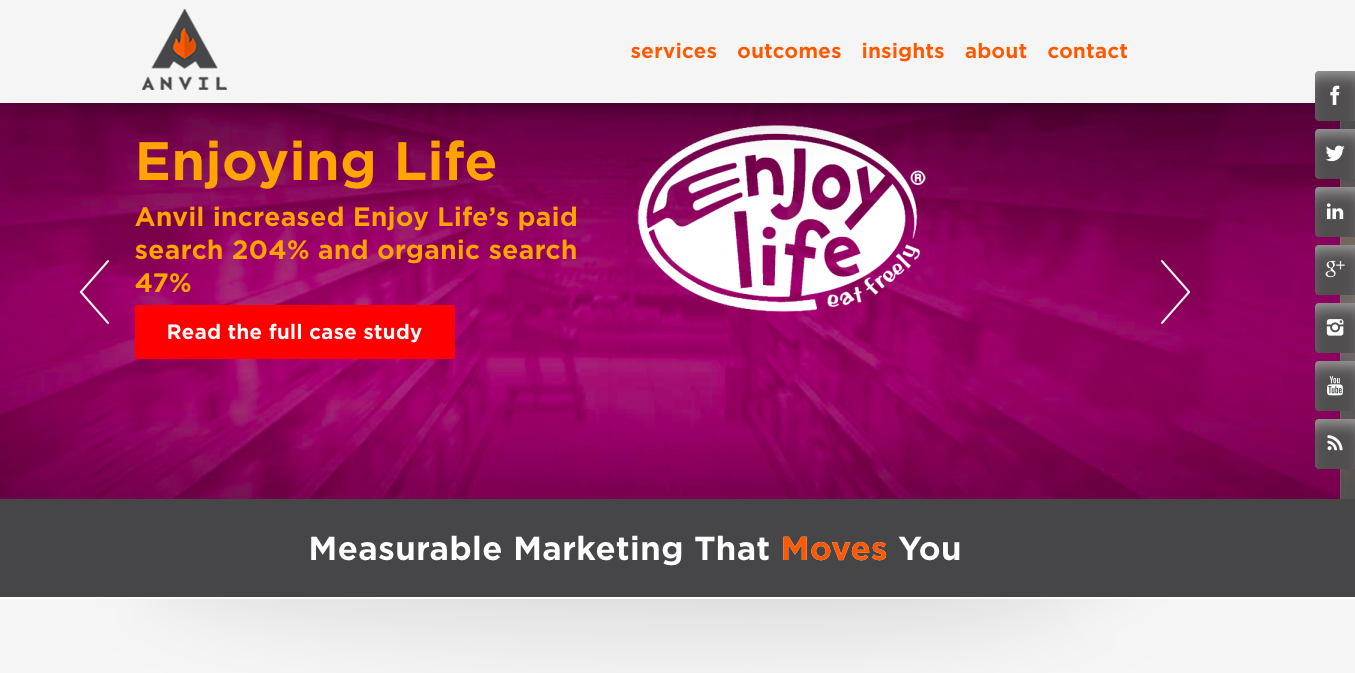
As a career agency professional specializing in SEO since 1996 and owning my own measurable marketing agency since 2000, I have a few thoughts on marketing products on ecommerce marketplaces like Amazon.
According to a Kenshoo study, 56% of consumers start product searches on Amazon. On the seller-side, 63% of Amazon Advertisers plan to increase their budget this year (a larger percentage increase than Google and Facebook spends). In short, Amazon is the new Google in many respects. If you don’t have a solid Amazon marketing strategy in place, you’re at a disadvantage.
Amazon Marketing Tip: Embed relevant keywords throughout product pages.
Like Google’s ranking algorithm, relevance factors focus on keywords embedded in the product page. Amazon’s ranking algorithm is also like Google in that it does not appreciate keyword-stuffing or otherwise negatively impacting the user experience with poorly-crafted copy and irrelevant keyword usage. When it comes to helping Amazon rank your product pages above the competition, it is essential to incorporate relevant keywords across all relevant fields, especially brand name, product listing title and product description. The current keyword character limit is 250 (not including spaces or punctuation). The length limit applies to the total content in all generic keyword fields, with a max of 5 attributes.
3. Marketing & Promotion
To define your promotional activities, it’s best not to start from comparing various marketing tools, but to first define your long-term and short-term goals, and only then choose the marketing methods that suit those objectives the most.
The following marketing activities can help you market your products successfully:
3.1 Brand awareness
Although mini-stores are a universal instrument that boosts traffic and helps to build trust, it’s role in increasing brand awareness is vital.
You can add a logo, change of design, and choose methods of shipping and payment.
This is an incredibly effective tool to showcase products in a way that aligns with your brand identity.
Besides, the best methods to build brand awareness are collaboration with bloggers and social media.
3.2 Revenue volume increasing
The best tools are discounts:
- to increase the number of items purchased per order, you can use buy-one-get-one offers;
- for new item ranking—special discounts and listings promotion;
- to increase an average bill—various bonuses and cross-selling.
The Yumbles ecommerce multi vendor platform special offers:
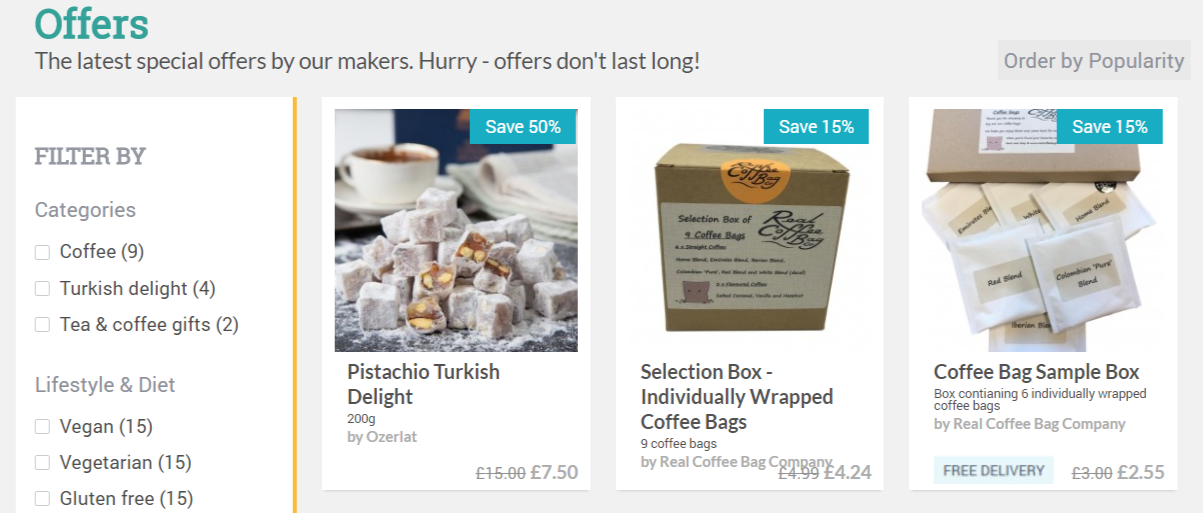
A virtual multi-store shopping mall blog is another universal tool that serves various goals, from posting educational articles for shoppers to new item promotion.
The highlighted item in a Flipkart blog article
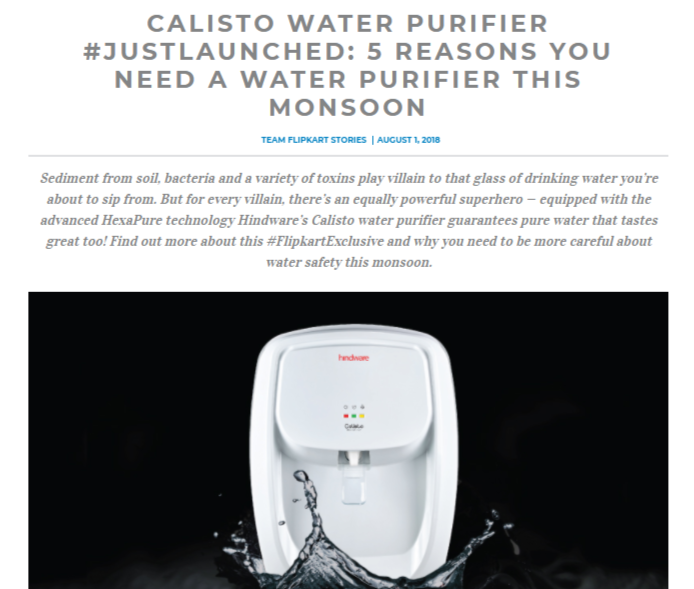
3.3 Traffic
Integration with shopping directories like Google Product Search, and SEO instruments is the best choice to boost traffic. Tools like Google Analytics built-in a ecommerce multi vendor platform ecosystem help to track traffic and to tweak the channels you use to gain it.
Some channels of external traffic work best when used for online multi seller mall listings.
For example, influencers and bloggers are effectively directing traffic to ecommerce multi vendor malls using a custom link to your product or a mini-store in their articles.
Here are some comprehensive guidelines on how to get a blogger to promote your product, and an example of how bloggers can bring traffic for virtual multi seller marketplace store sellers.
The best is to use a mix of marketing activities, like the Amazon virtual multi-store shopping mall suppliers:
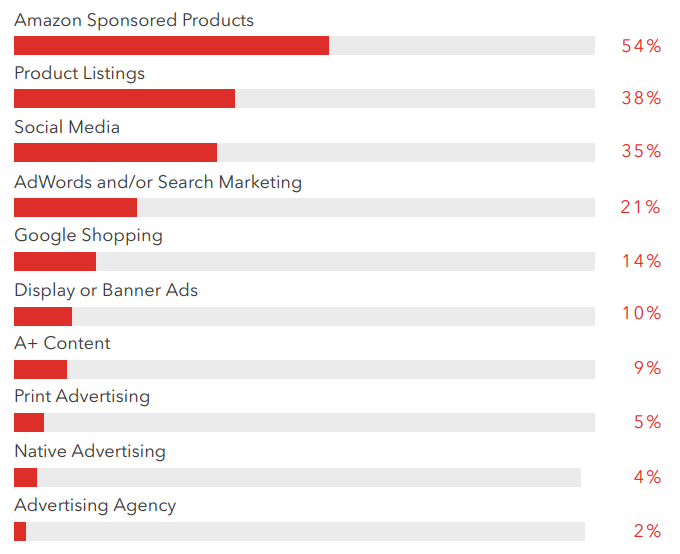
True Experience #5

James Thomson, a partner at Buy Box Experts, a consultancy supporting brands selling on Amazon. He’s also co-author of “The Amazon Marketplace Dilemma: A Brand Executive’s Challenge Growing Sales and Maintaining Control“.
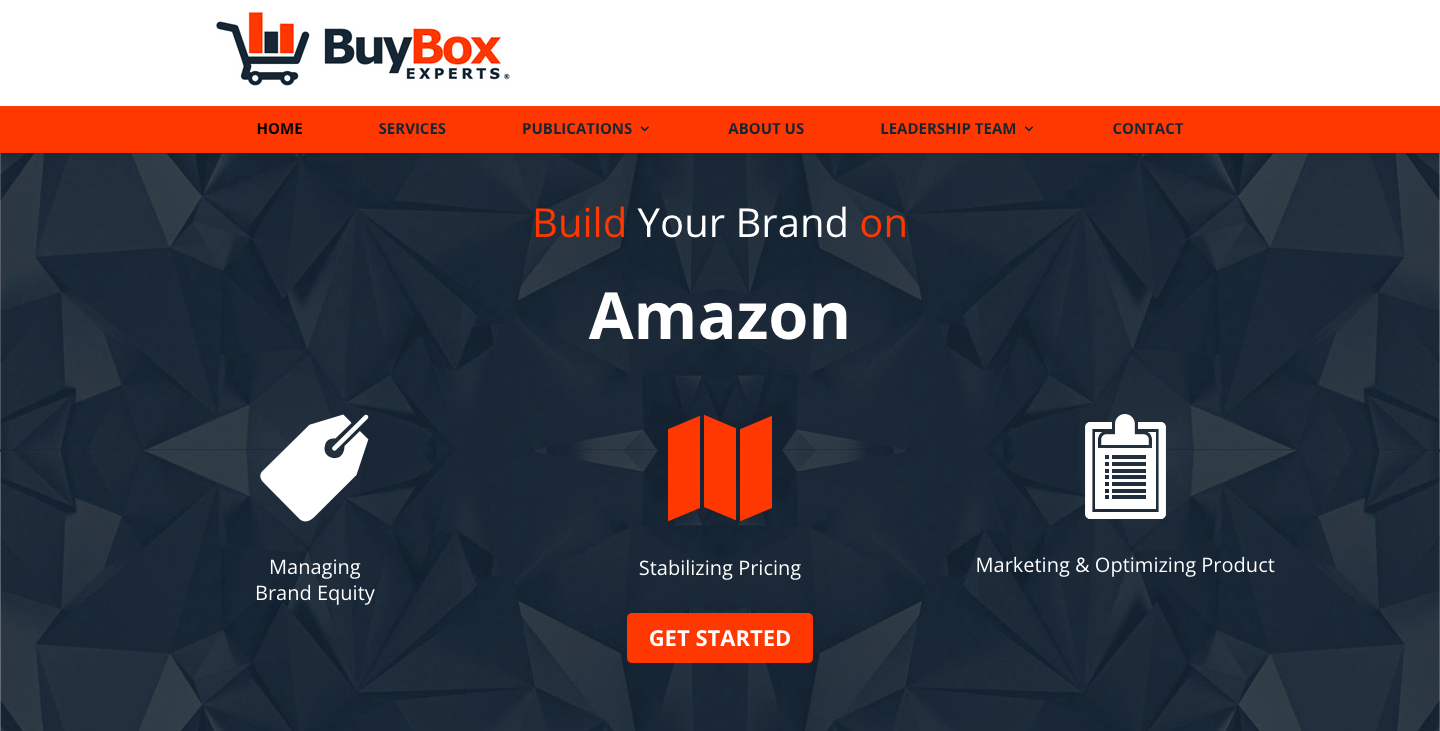
Amazon is unlike any other retail site. Since its creation, over 20 years ago, Amazon Marketplace has become one of the go-to e-commerce platforms for customers, as well as sellers. With a mission to provide consumers with the best quality products, at the lowest rate, Amazon makes it easy for manufacturers and businesses to sign up and start selling their goods. But even though Amazon works differently, that doesn’t mean every seller is going to thrive. If you want to be successful in this marketplace, you have to know your consumer and know how to target them.
Understand the Importance of Branding
What exactly does it mean to brand a product? It’s not just providing a name for the product, it’s providing somewhat of a backstory. For a consumer to want to buy what you’re selling, they need to know what it is. What does the product do? And how exactly can they benefit from it? Shoppers have to feel like they need something in order to make a purchase. Brand your product in a way that’ll make consumers feel they’re buying something that’ll make their lives better—easier.
Pay Attention to Content
Content is key. The way you describe your product is pretty much the only way a consumer will know if they want to buy it. Explain why what you’re selling is unique and necessary. Use keywords that are specific to your product and your product only. Are you selling something that’s high-quality? Say so. Are you selling something that’s waterproof? Say so. As a seller, you have a strong grasp on your product—your audience doesn’t.
Don’t Forget about Images
Amazon Marketplace has strict rules for how main images can appear. With that said, their rules for secondary images are way more flexible. Which means you could easily include images that highlight the functions that are specific to your product. Most customers are visual learners. They need to be able to see something, in order to want it. Don’t be afraid to include both main and secondary images.
Pay Attention to Customer Reviews
Here’s the thing: Not everyone is going to love your product and the likelihood of you receiving a negative review here and there is very high. With that said, product reviews are incredibly important. Think about it. How often do you use online reviews to decide if you want to buy something? Most do. And since you can’t typically delete negative reviews once they’re posted, make sure you (or someone you work with) is monitoring reviews and responding to users, with negative feedback, in a positive way that could lead to a happy resolution.
Don’t Be Afraid to Promote
Advertisement is a must for sellers. Especially if you’re new to the game. However, advertisement can be very expensive. Luckily, Amazon offers a number of avenues to advertise your product on the site. Using keywords associated with your product (for example, “beauty cream,” “hypoallergenic,” “back to school,” etc.), you can help drive traffic and potentially gain an impressive following.

True Experience #6

Steve Wimmer, the brand manager for TriNova—a young e-commerce brand serving the cleaning and automotive detailing market. They sell primarily on Amazon
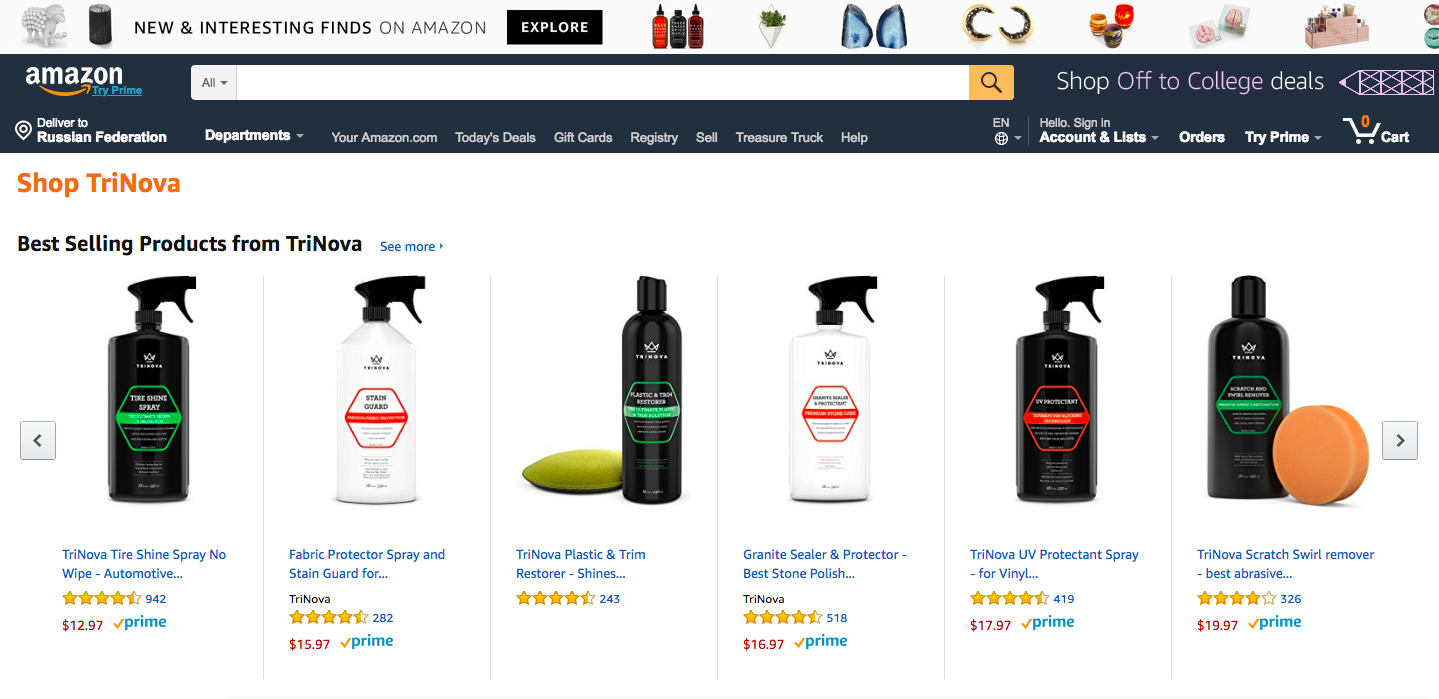
Here are a few best practices.
Table Stakes—you have to have these things or don’t even bother.
Solid product photography, well-written features (bullet points section), active customer service to respond to (and head off) negative reviews.
More advanced but still entry-level:
- Keyword research—find out what your competition ranks for and make sure your item(s) index for those search terms.
- Find 1-star reviews of competitive products and write your description in such a way that it alleviates those concerns.
- Use Amazon’s sponsored product feature to boost visibility and rankings (if customers make a purchase through a sponsored post, it signals to Amazon’s algorithm that your product is relevant for that search term and elevates it in rank).
- Use the most popular search term to lead your product title (e.g., if you’re selling a garlic press your title should start with “Garlic Press—sturdy stainless steel for mincing, dicing, preparing…, etc”)
The most important thing:
Products live and die on Amazon because of social proof. This means customer reviews. To really win on the platform you must ensure that as many customers as possible write thorough reviews of your product—without violating Amazon’s terms of service.
Showing up for relevant searches and having solid social proof (read “100 or more reviews) is 90% of getting sales there.
4. The Other Sellers—Compete and Cooperate
Research the suppliers that sell on the same eCommerce multi vendor platform, or are addressing the same audience.
By collaborating with some of them, you can boost visibility, sales and achieve long-term brand awareness goals.
4.1 Collaboration
Review listings of vendors that are selling complementary products (for example, memory cards and cameras) regularly, to identify opportunities for cross-promotion with them.
The Amazon cross-promotion of different sellers’ products:
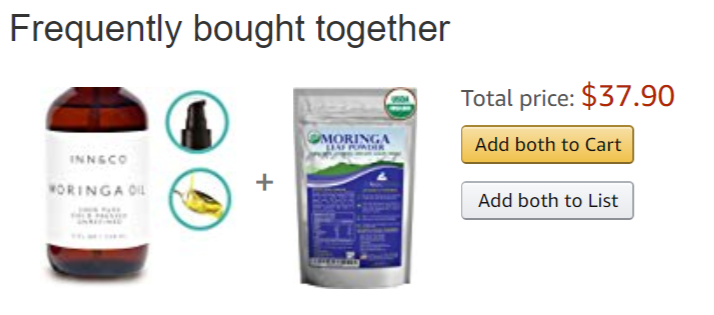
4.2 Competition—find the best sellers’ winning points
The best strategy is not to compete but to learn from your peers. Research their listings regularly, from content to customer questions and reviews.
Here are some points you should be particularly interested in:
- shoppers’ complaining: about packaging, price or quality;
- the frequency at which sellers are updating product content;
- the kind of content they use: seasonal photos, catchy descriptions;
- the kind of effect (if any) that actions have on their results;
- the directions they invest their ad money, and what works and what doesn’t.
The questions you should ask yourself after checking competitors’ listings:
- if they have a clearer-defined product value than you do, and what is it;
- what brings customers to those sellers;
- what are your competitive points when compared to them.
Based on that, improve your general strategy, come up with better-outlined product benefits, extras like free shipping, or other competitive services.
True Experience #7

Dani Nadel, the CMO and general manager for Feedvisor (@Feedvisor), a company using big data and machine-learning algorithms to make business-critical decisions for online retailers.
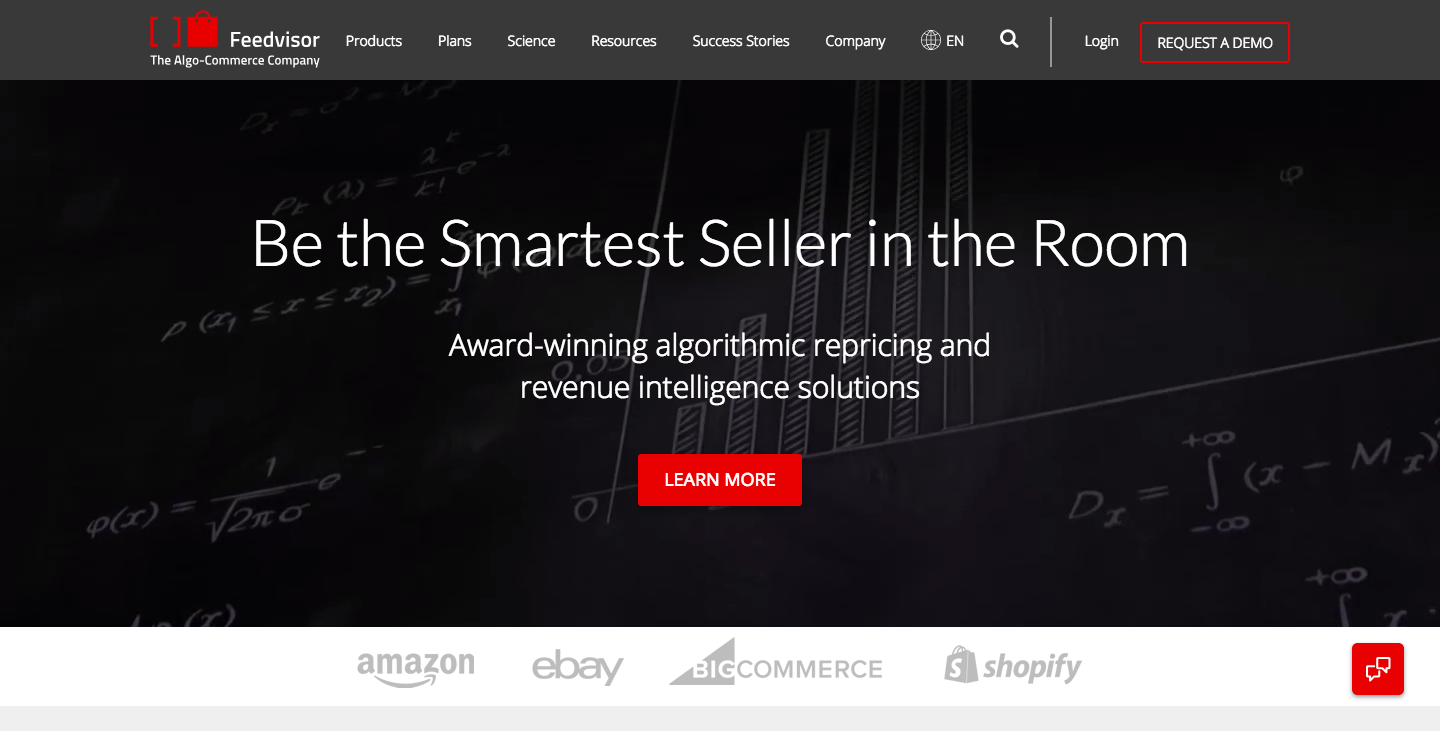
Maximize search visibility
Amazon’s highly sophisticated algorithm is designed to help shoppers find products with ease. When creating a new product listing, brands and retailers should take an in-depth, SEO-style approach to their marketing strategy by optimizing keywords and tailoring them for visibility, relevance, and conversion. Don’t forget to revisit your target keywords frequently, and use data insights to understand and assess keyword efficiency and performance.
Drive brand awareness, creatively
Contrary to popular belief, selling on Amazon doesn’t mean losing control of your brand ethos. Today’s brands and retailers can include creative features such as video, comparison charts, and feature-rich landing pages on their product listings to further strengthen brand integrity and awareness. Simultaneously, doing so provides them new opportunities to drive traffic, increase conversion rates, and optimize their advertising strategies.
Promote your top products
Advertising spend on Amazon can benefit every product on the platform, but it is particularly helpful for top-selling items. Sponsored Products Ads drive exposure and increase revenue for products that are already ranking well organically. When running ad campaigns, marketing teams should work closely with product teams to regularly track inventory levels and ensure items do not go out of stock, particularly during peak sales times.
Use data to your advantage
Brands and retailers must create a fluid, adaptable business strategy that can seamlessly adjust to changing consumer trends and behaviors. As Amazon’s audience continues to grow and more brands and retailers begin selling on the Marketplace, it is becoming increasingly important to leverage data to drive profits and stay steps ahead of the competition. Invest in a data-driven AI platform that can digest and analyze all of the crucial variables that go into running an Amazon store, while providing actionable, big picture insights that will grow your business.

5. Overcoming the Most Common Issues
The most common problems you might encounter when you start selling online, including the experience on online multi seller malls, are low conversion rates in general, and abandoned carts in particular, as one of the main steps of the conversion process.
Using the approaches considered above, it’s possible to set up the effective steps to overcome both problems.
5.1 Low Conversion Rate
The most important element to increase conversions is product content.
Conversion rate—content type correlation:
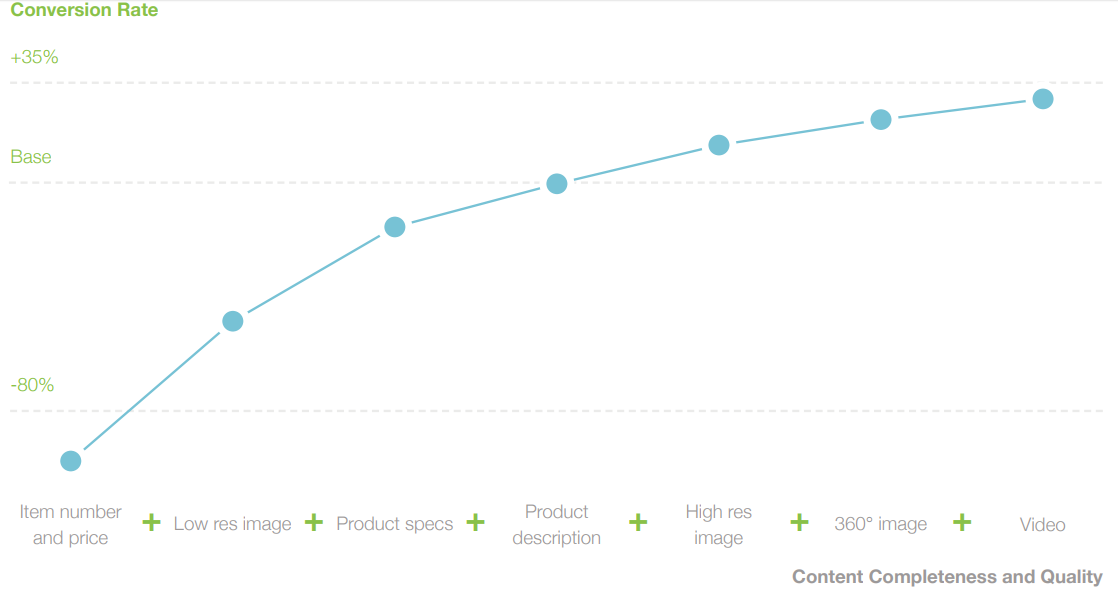
To use content efficiently while leading shoppers through the sales funnel, define how exactly your shopper type is going through the sales funnel.
There are usually a few shopper types among your buyers’ segment, and each of them is going through the sales funnel in a different manner.
To segment those buyer types, the question is usually, how many visits it takes to make a purchase, and which type of content should accompany shoppers during each visit.
Use Google Analytics data and your ecommerce multi vendor mall customer insights to build this picture.
Knowing all that details lets you pick promotional instruments that best fit each step of your customer on the way through the sales funnel to purchasing.
The Yumbles “entry” lucky coupon as the tool to motivate online shoppers on their very first steps through the sales funnel:
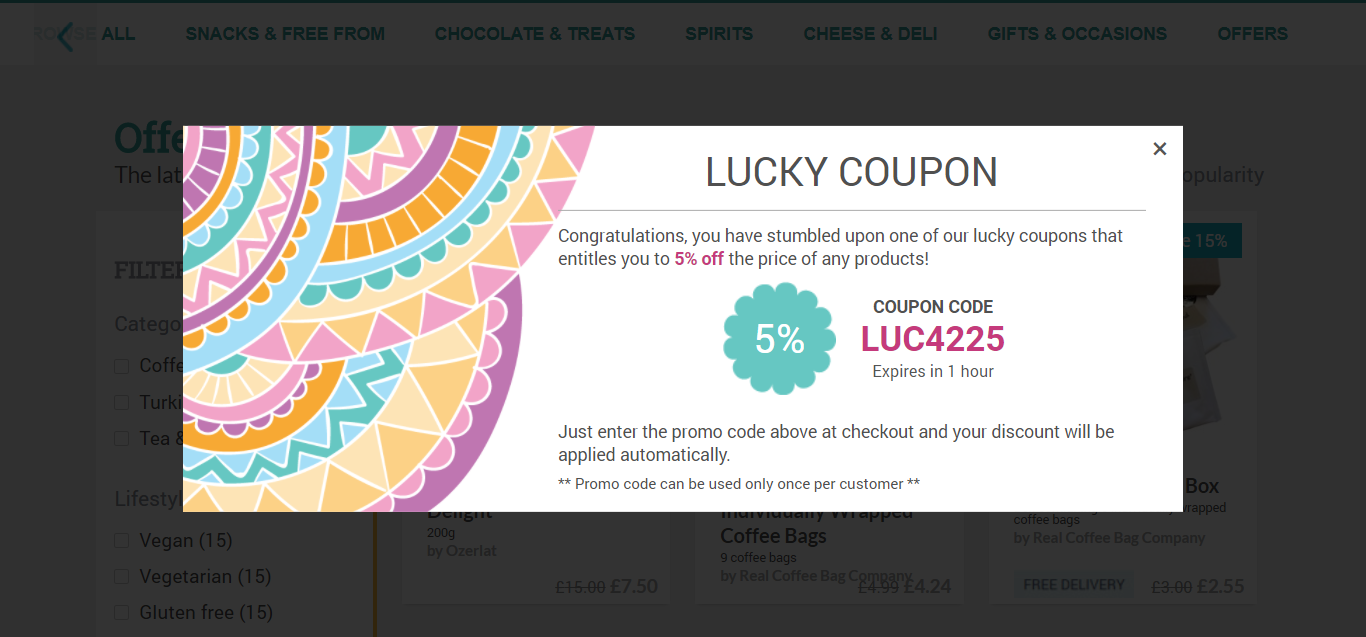
5.2 Abandoned carts
The detailed reasons for abandoned shopping carts are the following, with item costs as the main of them:

However, many people choose to buy from a brand they trust over a lower priced option.
Thus, building trust by using the approaches considered above is vital for successful selling, since you’d lose a significant part of the revenue with abandoned carts.
Besides, email-marketing helps to catch up with buyers who abandoned their carts.
The Yumbles ecommerce multi vendor marketplace platform email intended to motivate shoppers to proceed with the items they saved:
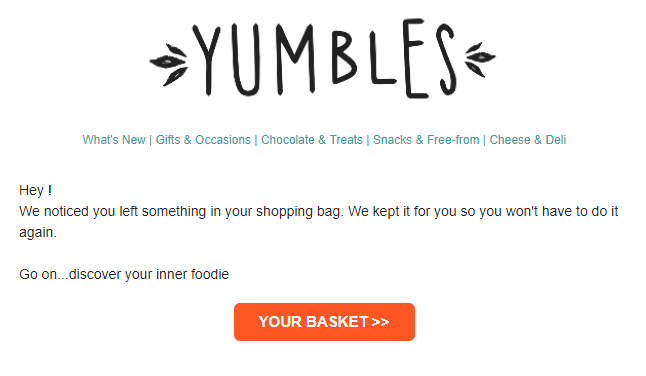
Using data insights to understand your shoppers, learning from competitors and collaborating with them, leveraging proven marketing instruments, and constantly improving your listings are the most important components to sell on virtual multi seller marketplace stores successfully.
The sellers that are able to leverage those elements to overcome any issue they encounter on ecommerce multi vendor malls are the ones that are winning the widest online customers’ audience.

Yan Anderson is the Head of Content Marketing at CS-Cart with over 10 years of experience in the eCommerce industry. He's passionate about explaining complicated things in simple terms. Yan has expertise in building, running and growing eCommerce marketplaces. He loves to educate people about best practices, new technologies, and trends in the global eCommerce industry.
